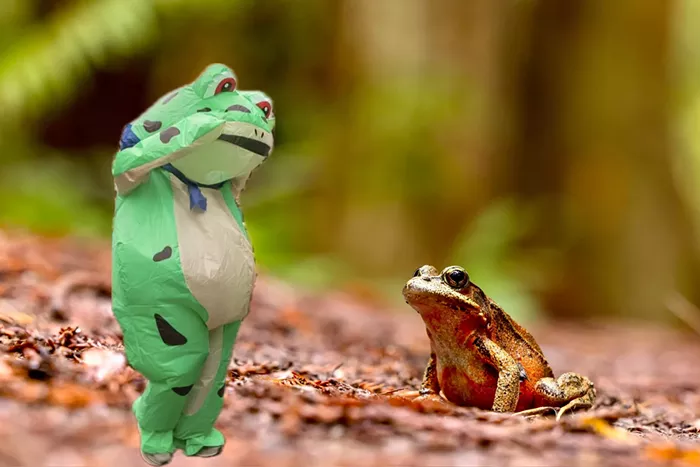
"Traversing water and land, amphibians represent a bridge between ecosystems. For over 250 million years, they've adapted to constant changes with a determined, if slimy, grace. Wherever amphibians find themselves, they tend to become the ecosystem's natural alarm system, since their thin skin absorbs everything, including nutrients from healthy wetlands, moisture from surrounding soil, and chemical pesticides. This hypersensitivity gives amphibians a talent for registering environmental shifts. As indicator species, they offer insights into an ecosystem's struggles long before its root causes emerge."
"Bright green and wide-eyed, the peaceful demonstrator embraced the power of contrast, cartoonishly innocent in the face of weaponized government overreach. As the costumed resistance has grown, a clever protesting tactic has become something more. For Portlanders and other communities exhausted by the Trump administration's attacks on civil rights across the country-as well as on Portland's identity specifically- these unofficial mascots and their froggy leader present a welcome symbol of change."
Inflatable frog protests have become a symbol while real amphibians provide ecological value and need protection. Amphibians traverse water and land and serve as bridges between ecosystems. They have adapted for over 250 million years and act as natural alarm systems because their thin skin absorbs nutrients, moisture, and chemical pesticides. Their hypersensitivity allows early detection of environmental shifts, making them key indicator species. More than 40 percent of amphibian species face extinction from habitat loss, deforestation, disease, and fragmented migration corridors. Northern red-legged frogs in Northwest Portland must dangerously cross Highway 30 during migration. Oregon has a new funding opportunity to support amphibian conservation.
Read at Portland Mercury
Unable to calculate read time
Collection
[
|
...
]